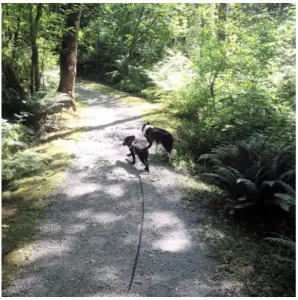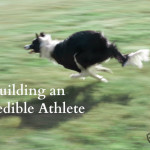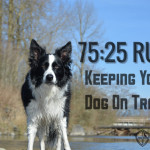How to Introduce a New Dog into the House

At one point in time, some of us may decide to bring a second or third dog into our household; either because of an open heart or companionship for our resident dog(s). Either way, it can be a nerve-racking experience, especially because you already love your resident dog and obviously have strong feelings towards the new dog, so you want them to get along and live happily ever after.
Let’s talk about reality, though. The majority of dogs don’t get along “just like that”, especially herding breeds. They tend to be more stand-offish with strange dogs, but once they have invited them into their social circle, they are forever friends.
PREVENTATIVE
If you don’t yet have a second dog, the best way possible way to prepare for the addition is by picking a dog that is suitable for your resident dog(s).
General rules to follow to make an easier match:
- Matching the right personalities
- Making sure their ages and sex are suitable
Personalities
Determine your current dog’s personality type:
Passive/easy going – these are the dogs that will roll over in submission; if a dog starts a fight, they run away or back down, basically wanting no conflict whatsoever.
- This type can be paired with any other type of personality mainly because they will back down to any type of conflict.
Okay with conflict, depending- these are the dogs that are mainly easy going, but if a dog was to snap at them, they fight back.
- This type can sometimes go either way for the most part, depending on the personality of the other dog. Often we want to be more careful, especially if we pair a male with another male, or female with another female. If one has this type of personality and the other dog was not easy going, you may have conflict.
Not easy going/high stress – these are the dogs that are usually picking fights with strange dogs, they tend to get into a lot of fights, they have attitudes and they are overly reactive.
- This type of dog is not that common to begin with, but we always make sure that when trying to pair the dog with others, the dogs’ surrounding will be passive and easy going in order to tolerate this dog’s personality. It is not a good idea to pair this type of dog with the same sex or with a dog relatively close in age, either.
Then on the outskirts, we have the few dogs that are suffering from emotional issues such as fear, stress and insecurities, which also need to be taken into consideration when wanting to introduce them to other dogs.
Age & Sex
Age matters when pairing dogs. I’ve seen too many times where two dogs of the same age and same sex are brought in the household together and, if they were raised from a pup, they start fighting once sexual maturity hits (if one is not passive/easy going). Or, if you already have a resident dog and you plan on bringing in a second dog of the same sex and relatively the same age and both are not easy going, this is a recipe for disaster.
Stay on the safe side and make sure (if you’re adopting) that the dogs are at least two years apart if they are the same sex. This will lower any dominance-aggression between the dogs, because the younger dog will automatically take a lower role in the household.
When you have the ability to pair your dog with a suitable personality, you have a greater chance at living in a peaceful household. This is just like matchmaking with humans - not all people get along so we cannot assume that all dogs will get along.
INTRODUCTIONS
First impressions can make or break a relationship before it has really even begun and the introductions should not be taken carelessly - a lot is riding on this.
Location: This matters, especially for the resident dog. Never do an intro in your home; this can go wrong in so many ways.
- This is the resident dog’s territory and we may not know how he or she will feel with a new dog coming into the house without formal introductions. Head out to a local park where there is lots of room for both dogs to have their own space.
- Outdoor space gives the dogs more freedom to move if one dog is feeling too much pressure and stress. This allows the dogs to have more choice in what happens, rather than being forced together.
- Distractions can actually help you. If there is another dog or smells that both dogs are interested in, it can help them enjoy one another’s company without the pressure of face to face.
Safety: Ensuring safety for one or both dogs should be your top priority, especially if one or both dogs have a history of fighting.
Take care in your location and find a suitable spot where there is a chain link fence. This fence can be used when or if the dogs decide they want to get up close with one another. The fence will allow for scent to be passed and information to be gathered, but no physical touch can be made at that time.
Time: Don’t feel that on the first introduction the dogs will actually have to meet face-to-face, especially if one or both dogs have a history of fear towards strange dogs, or if they are just more cranky in general, then you want to make sure you give them time to warm up to one another. Start by having the dogs at a distance that is comfortable for each and feed treats every time the nervous dog looks at the other one; this is called open bar, closed bar technique. Slowly decrease space as the dog becomes more relaxed.
Never force the dogs to meet. If one or both dogs are backing away or looking away from the other dog, this means they do not want to engage - listen to the dog.
CO-EXISTING BEFORE THE BOND
Once the introduction has been made and the two (or more) dogs have all met and are okay with one another’s presence, now comes the time to start the hard work, which includes:
- Classical Conditioning
- Desensitization (in some cases)
- Management
- Extra fun outings
Bonding doesn’t just happen automatically; it takes time for dogs to develop a positive association strong enough to include the dog or human into their family/social circle. Sometimes dogs do this on their own without human intervention and that is great if that can be done, but if you’re like me, I don’t want to leave it up to chance because I want the match to work 100%, so I intervene slightly to make sure things go as smoothly as possible.
In the house, everything is different, especially if you have a dog that isn’t so easy going. In a household setting, they are going to be even more stressed and cranky, so plan for and manage this accordingly.
Management: When you hear this word, it basically means to manage your environment or dog so that bad outcomes are very minimal. If you know you have a dog that doesn’t like his or her space invaded by other dogs, keep the other dog tethered to you or separated by baby gates so they can grow accustom to one another, and build a relationship while not making the one dog angry and resentful.
Things You Can Do to Speed up Bonding Between Dogs
Simple, classical conditioning does wonders for every dog. Simply by having good things happen around each dog will create positive associations and they will soon enjoy one another’s company because it has been previously enjoyable.
Playing hide and seek is a great way to get the dogs having fun and keeping their attention on you.
Sitting down one-on-one with both dogs in front of you (tether one if you have any resource guarding issues) and teach each dog tricks. Let the rewards pour in, laugh, pet and enjoy the time – the dogs will.
Walks! Go for LOTS and lots of walks. Walking parallel with a dog can be a great bonding experience as the dogs can freely interact, if they choose, and at the same time, they can investigate new smells and objects together – finding use in the other dog.

Luna (BC) and Mookie’s first outing together was a trail. Luna had off-leash privileges, so she could escape the new puppy. Mookie was on-leash to prevent him from invading Luna’s space before she was comfortable.
Off-leash time is important for all dogs to have, but we need to make sure that both dogs are stress free, or have low stress, and are already tolerating one another very well. If we have this, then we can take them off-leash at a field or trail together, but keep moving, don’t stand around. By continuously moving, it forces the dogs to move as well, which causes less pressure that could build and cause a possible argument.
Article By:
Kris Crestejo
Meet Our Evangelist







